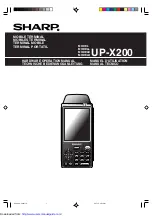
Glossary 141
Hibernation Mode
A power mode that saves all data in memory to the hard disk and turns the CPU and hard disk off.
When canceling Hibernation Mode, all application programs that were running are restored to their
last state.
Icon
This refers to a small image that represents an object that a user can use.
LAN (Local Area Network)
A communication network connecting computers, printers and other devices within a local area such
as within a building. A LAN enables all connected devices to interact with other devices on the net-
work. The current LAN uses the Ethernet media access control method developed in the early 1980s.
To connect to an Ethernet, a network card called a LAN card, Ethernet card or network interface
card is required. To exchange data between computers, a protocol is required besides the hardware
equipment. Windows XP uses TCP/IP as the default protocol.
LCD (Liquid Crystal Display)
There are Passive Matrix and Active Matrix LCD types. This computer uses the Active Matrix type
LCD called TFT LCD. Since an LCD is implemented by transistors instead of a cathode-ray tube unlike
a CRT, it can be slim. Because it does not blink, it reduces eye strain.
Network
A group of computers and devices, such as a printer and scanner, connected by a communications
link. A network can be either small or large and can be connected permanently through cables or
temporarily through a telephone lines or a wireless link. The biggest network is the Internet, a world-
wide network group.
Network Administrator
A user who plans, configures and manages network operations. Sometimes, a network administrator
is called system administrator.
Notification Area
This refers to the right area of the Taskbar including program icons such as the volume control, the
power options and the time.
Power Schemes
This refers to a pre-determined power management option group. For example, you can set the time
the computer waits before entering Standby Mode, or before the monitor or hard drive turns off.
The settings are saved as a power scheme.
Quick Launch
This refers to a toolbar that can be configured so that you can launch a program such as Internet
Explorer or display Windows Desktop with one click. You can add any icon to the quickly launch area
of the Taskbar and launch frequently used program by clicking that icon.
Server
In general, a server refers to a computer that provides shared resources for network users.
Share
This refers to setting a resource of a computer such as a folder or printer so that other users can
also use them.
Содержание Q1 Ultra Series
Страница 1: ...1 User s Guide ...





































